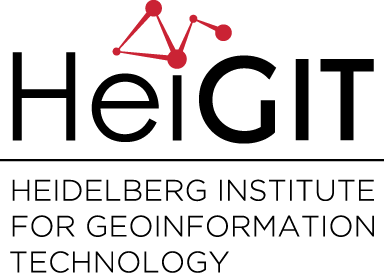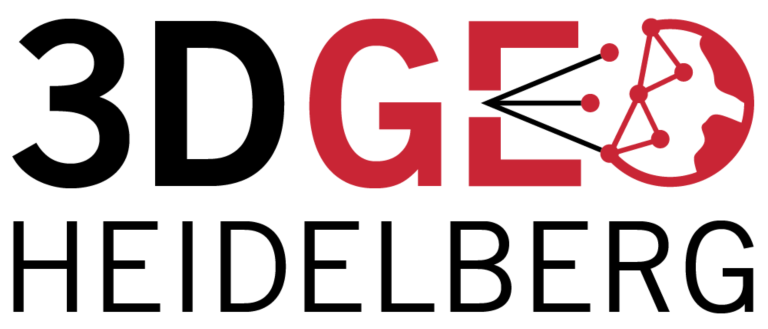Tag: OpenStreetMap
-
Today paper on green routing at GIScience conference 2021
The “11th International Conference on GIScience” 2021 started! Our full paper related to MeinGrün project and openrouteservice will be presented this Tuesday 13:30 CET in Session 3 “Mobility”: 13:30-13:45: Christina Ludwig, Sven Lautenbach, Eva-Marie Schömann and Alexander Zipf. Comparison of simulated fast and green routes for cyclists and pedestrians. Routes with a high share of…
-
Analysing the Impact of Large Data Imports in OpenStreetMap
OpenStreetMap (OSM) is a global mapping project which generates free geographical information through a community of volunteers. OSM is used in a variety of applications and for research purposes. However, it is also possible to import external data sets to OpenStreetMap. The opinions about these data imports are divergent among researchers and contributors, and the…
-
OSM Changeset Analysis with Humstats and the ohsome Framework
In this blog post we want to take a closer look at a fruitful mapping collaboration between humanitarian organizations and corporations. Since 2015 mapping remote areas in OSM is one part in the cooperation between the leading savings, retirement and insurance company, Aviva, and the British Red Cross (BRC). By combining multiple datasets we analyzed…
-
HeiGIT und das Deutsche Rote Kreuz beim Digitaltag 2021
Am 18.06.2021 findet der Bundesweite Digitaltag 2021 der Initiative „Digital für alle“ statt. Der Digitaltag ist eine Plattform, auf der digitale Projekte und Aktionen aus der Zivilgesellschaft vorgestellt werden und das Thema Digitalisierung von verschiedenen Seiten beleuchtet wird. Mit dem Digitaltag verfolgt die Initiative „Digital für alle“ das Ziel, die Digitale Teilhabe aller Menschen in Deutschland…
-
GIScience and HeiGIT contributions to AGILE 2021 conference
The AGILE 2021 conference is taking place this week. It is the the 24rd AGILE conference on GIScience. AGILE is the Association of Geographic Information Laboratories in Europe and the 2021 conference is for the first time held as a virtual conference. As in earlier years GIScience Heidelberg and HeiGIT are contributing to the conference with several…
-
Automatic building detection with ohsome2label and Tensorflow
Accurate and complete geographic data of human settlement is crucial for humanitarian aid and disaster response. OpenStreetMap (OSM) can serve as a valuable source, especially for global south countries where buildings are largely unmapped. In a previous blog, we introduced our recent work in detecting OpenStreetMap missing buildings, so this time we will show you…
-
All countries of Central and South America now on Open Healthcare Access Map
After Sub-Saharan Africa and South and Southeast Asia we have now published all countries of Central and South America on the Open Healthcare Access Map. The web application is available here: https://apps.heigit.org/healthcare_access/. Please note that this is still a prototype and feedback on improvements and desired functionalities is very welcome. You can reach us at…
-
Third International Mapathon on Mon 17.05.2021 by disastermappers heidelberg, MAMAPA, CartONG, HuMap and OSM Ghana
Dear mappers, on Monday 17.5.2021, 18.00pm a third international mapathon together with disastermappers heidelberg, MAMAPA, CartONG, HuMap and OSM Ghana will take place, which will give you some insights in mapping for humanitarian purposes from the perspective of different organizations and people around the world! For beginners we will offer a mapping introduction as usual,…
-
Detecting OpenStreetMap missing buildings by transferring pre-trained deep neural networks
Recently, a new research paper “Detecting OpenStreetMap missing buildings by transferring pre-trained deep neural networks” (Pisl, J., Li, H., Herfort, B., Lautenbach, S., Zipf, A. 2021) has been accepted at the the 24th AGILE conference 2021. The conference will take place virually on June 8 to 11, 2021. Accurate and complete geographic data of human…
-
Deriving indicators for Points of Interest and analyzing mixed activities in urban areas
We are pleased that our research paper “Deriving indicators for Points of Interest and analyzing mixed activities in urban areas” (Ullah, Lautenbach, Zipf 2021) has been accepted at the 12th International Symposium on the Digital Earth (ISDE) scheduled within the GI Week 2021 in Salzburg. The conference will take place from July 5th to July…
-
Two-part Mapathons for better new user retention?
The project “25 Mapathons“ goes into the next phase. Based on the experience of until today 17 OSM mapathons with German Red Cross (GRC) chapter and an extensive literature review on the success of mapathons, the “25 Mapathons” team has identified several points of possible improvement in the way how mapathons are conducted in general:…
-
Towards a framework for the analysis of local OSM contributions
Volunteered Geographic Information (VGI) such as OpenStreetMap (OSM) is often defined as the collaborative acquisition of geographic information and local knowledge by volunteers, amateurs or professionals (Goodchild, 2007). The increasing availability and importance of local data in OSM is largely acknowledged in VGI projects. Local knowledge provides access to a plethora of contextual information and…


